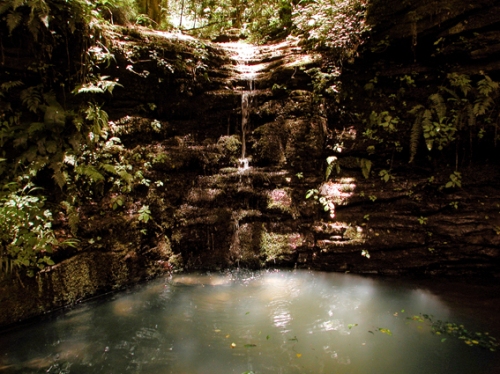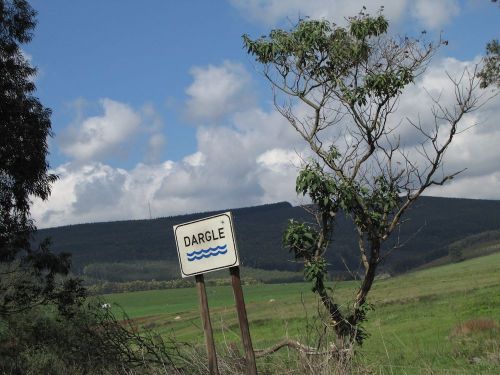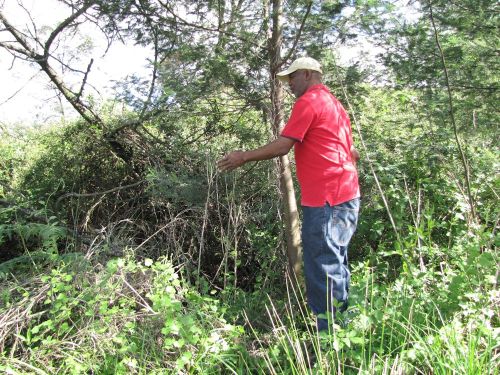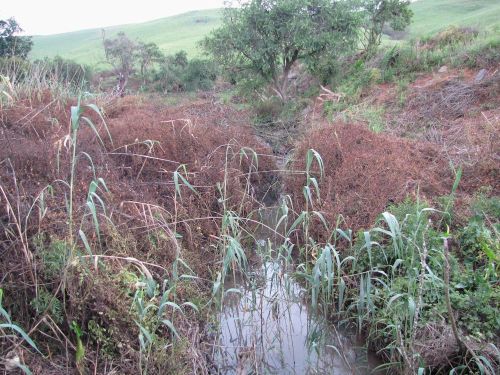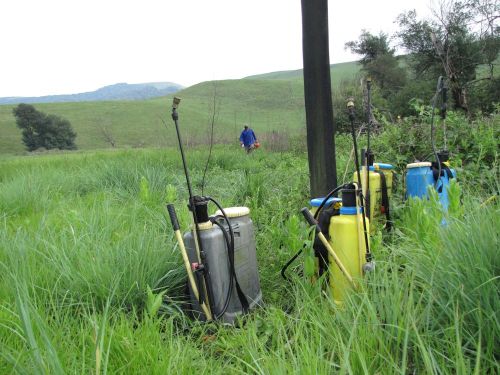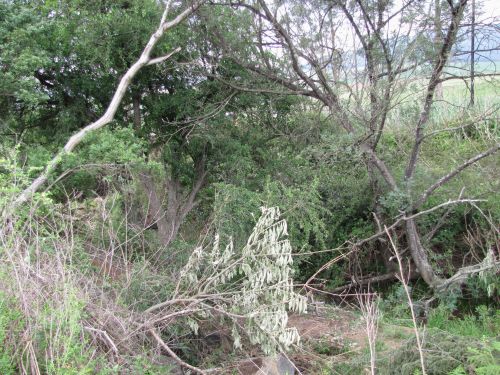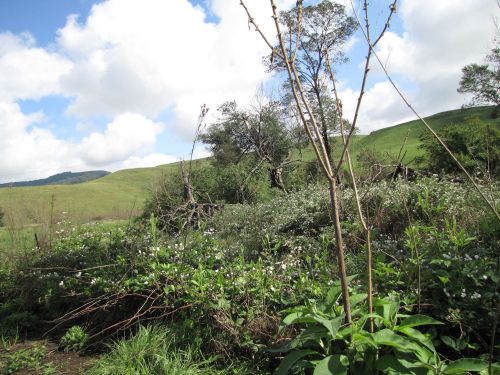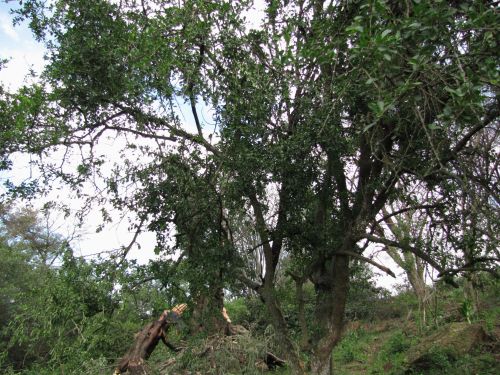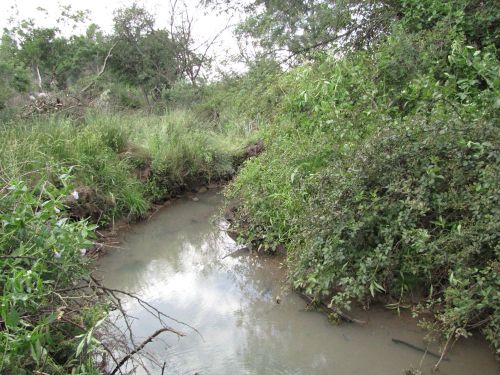There are 96 landowners on the 90km Lions River – the same number as all the way from the source to the sea along the uMngeni River. “Lots of landowners mean lots of fences”, laughs Penny Rees, who, with fellow walker Preven Chetty, climbed under, over and through 70 fences on their mission to document the health of the river recently.

Last year, when Penny and her team of DUCT volunteers walked 311 kms along the uMngeni River, it became clear that the tributaries play a major role in its health. As the Lions River is a major tributary of the economically important uMngeni River, the walk was undertaken in order to assess the state of the rivers health. The findings of the walk will be used to assist in the drafting of catchment management plans and assisting willing landowners to rectify problems and begin taking responsibility for the health of their section of the river. The walk began on Sunday 22nd September at the source in the hills south-west of Fort Nottingham.
The River starts life as the Elands River and then becomes the Lions, which had everyone confused during the planning stages. It twists and turns about the Midlands, through many, many wetlands.

Passing through Fort Nottingham, Lidgetton, Caversham, Lion’s River and the upper and lower edges of Dargle.

The walk ended on Sunday 29th September at the Lions/uMngeni Rivers confluence approximately 1 kilometre upstream from Midmar Dam.

Penny writes about the journey:
When we walked the uMngeni during May 2013, we realised that walking the entire length of a river gives an extremely accurate picture of the state of the rivers health. The after effects from the uMngeni River Walk have included much liaison with relevant authorities, as well as input in many different arenas regarding the management of the uMngeni River and actions to restore that rivers health. It is thus believed that the ground work has been laid for similar input into the sustainable use and management of the Lions River.
The daily routine comprised a 06h30 departure by the walkers each whilst the support crew broke camp, and drove to the following nights overnight point which entailed either pitching camp on the river banks or overnighting with local landowners. Whilst walking, all impacts were GPS’d, photographed and recorded on dictaphone and regular water tests were conducted. In the afternoons after arriving at camp, dictaphone transcripts and photos were downloaded, the photos were edited, the daily blog written, and the water quality tests checked and recorded.

The following short report is an initial draft report. The full, detailed report, with maps and photos will be made available once all the data has been collated.
Observations
Wild animals
Otter and water Mongoose sign was seen regularly from approximately day 3, and Reedbuck and Duiker were seen daily. Porcupine scats and quills were seen regularly. Crowned Crane were also seen or heard regularly, and scats of caracal, jackal and leopard were also regularly seen.
Vegetation and impacts
For only the first 4 kilometres from the source which comprises a vast wetland, vegetation was indigenous and pristine. The stream originates from the wetland from whence it flows underground for +- 1 kilometre, after which the water emerges in a clear pool. The stream winds across grassland dotted with wild flowers, then begins a decent through a small rocky area, with pools and cascades, gnarled Yellowwoods in small indigenous forests and stunted Protea trees on the grasslands above. Thereafter there were only sporadic areas of un-impacted, natural vegetation along the river.

Impacts
Once on the “plains” below the source vast wetlands stretch for many kilometres, and the majority of the land use is intensive dairy farming, which has heavy impacts on the river – dairy effluent either pumped directly into the river or the use of the effluent to irrigate pastures.

There is timber planted into the river buffer – at times to the river’s edge.
A section where the river was diverted many decades ago ends in another mini escarpment, where the riparian area is choked with invasive wattle trees, where after the river meanders past natural veld, and then tumbles down over a series of cascades, the entire area once again choked with wattle trees.
This scenario was repeated the length of the river, however the majority of the river is impacted by the heavy wattle infestation, massive log jams and the river shows signs of nutrification constantly: sludge on the rocks and river bed, murky water, invasive aquatic plants flourishing such as Parrots Feather and Water Cress.

Many of the wetlands have either unused historical drainage ditches that have grown closed, or functioning drainage ditches, some very new and very deep. There are also a number of dykes on the river banks.
Below Lidgetton the river is reduced to a trickle due to the extensive extraction upstream.
The water entering the Lions River from the Mooi River Transfer scheme via the Impofana River was extremely silty, and this silt never completely dissipated before the confluence with the uMngeni River. It was only on the stretch of river upstream from Lions River, and also the section approaching the confluence, that the floodplains were in fairly reasonable condition, with only a few small patches of bramble and some small poplar plantations.

River Buffer Zone width
There are many areas along the river where the buffer of 32 metres is not respected – either by the planting of timber or pastures, commercial timber that has self-seeded, dykes and drainage ditches, manicured gardens and lawns, informal settlements, uncontrolled invasive plants such as bramble, wandering jew and bugweed.

Pump Stations
Numerous water extraction pump stations were observed – predominantly in the agricultural areas.
Drainage Ditches and Dykes
The majority of these are most likely historical and many are now vegetated and today have the appearance of small streams. Some seem, however, to be newly constructed. In prior years, farmers were encouraged by Government to drain the wetlands. It is now illegal to make any new drains.

Dams / Weirs
Aside from Umgeni Water’s gauging weirs and one extensive dam approximately 10 kilometres below the source, there are no big dams or weirs on the river.
General water quality observations
The occurrence of aquatic water invasive plants such as Nasturtium officinale (Water Cress), Myriophyllum aquaticum (Parrots Feather), Lagarosiphon muscoides (fine oxygen weed) are all a visual signal that the river water has excess nutrients, be they from agricultural fertilizers or dairy effluent. Without these excess nutrients, these plants would not flourish the way they do. These plants can smother entire sections of the river, blocking all sunlight which has negative effects on the river ecosystem. In addition many use up the oxygen in the water, thus robbing aquatic creatures of the ability to breathe. Lastly, they smother natural vegetation and take over completely. Their only advantage is that they are utilising the nutrients to grow, thus assisting in the removal of some of these nutrients. The Water Cress is seen by some river ecologists as the lesser of two evils – it is shallow rooted and utilises the nutrients in the river bed as opposed to for example algae, which robs the water of oxygen.
Sadly there are insufficient un-impacted lengths along the river for the river to ever heal properly, which is possible given a long enough length without impacts. It should be kept in mind that with too constant a source of contamination, a tipping point is reached whereby there is so much contamination that the river is unable to heal – and this is certainly the case with the Lions River.

Mini Sass
Mini SASS is a very simple and enjoyable way of determining the health of the river, and the results give an overall picture of river health that is often missed by laboratory tests, for the pure and simple reason that a lab test, if taken say a week after a chemical contamination, may not reveal any chemicals whilst the Mini SASS gives an overall picture of the rivers health at any time. With Mini SASS, aquatic insects are caught, identified and classed according to tolerance levels of pollution and a simple scoring method results in an accurate picture of river health.

We were unable to conduct many mini sass tests, due to the fact that the majority of the river is naturally deeply eroded with vertical banks of 2 or more metres. Not only did this make accessibility difficult, but meant a lack of rapids and riffles which are essential for mini sass. Of all the tests we did conduct however the highest score indicated that the river was only in Fair condition (moderately modified), and the majority of tests indicated a river varying between very poor to poor condition (largely critically modified).
Read the daily account at: www.umngeniriverwalk.wordpress.com
Midlands Conservancies Forum secured funding for Monitoring Tributaries (as part of the MCF Protecting Ecological Infrastructure programme) through N3 Toll Concession. N3TC is funding Water Workshops for all Midlands Conservancies in the next few months. Penny plans to do presentations to the communities along the Lion’s River (and other Midlands rivers) – to share problems the river is experiencing and the things landowners can do to alleviate negative impacts.

 Then the highlight of the day – heading outdoors and off to the local wetland to reinforce the classroom learning. At the edge of the plantation, the kids split into two groups and had a race to find as many different leaves and grasses and flowers as possible. At the sound of the hooter everybody returned with their plants- laid them out on some boards and discussed them.
Then the highlight of the day – heading outdoors and off to the local wetland to reinforce the classroom learning. At the edge of the plantation, the kids split into two groups and had a race to find as many different leaves and grasses and flowers as possible. At the sound of the hooter everybody returned with their plants- laid them out on some boards and discussed them. After a snack, everyone trudged off across the wetland to find the river. It was quite a mission through invasive brambles. The wetland is very overgrazed and therefore more vulnerable to getting invaded.
After a snack, everyone trudged off across the wetland to find the river. It was quite a mission through invasive brambles. The wetland is very overgrazed and therefore more vulnerable to getting invaded. Saddened, the group headed back across the wetlands and got lost. Nkanyiso comments “The reeds were taller then us and the wetland was mushy. It took us quite a long time to find a way through but we did eventually manage and we were free.”
Saddened, the group headed back across the wetlands and got lost. Nkanyiso comments “The reeds were taller then us and the wetland was mushy. It took us quite a long time to find a way through but we did eventually manage and we were free.”













